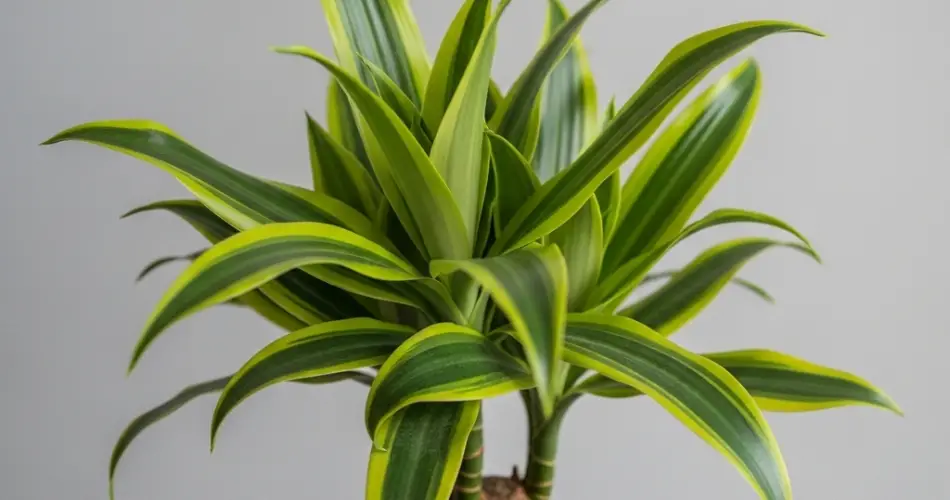Dracaena is a stylish, low-maintenance plant loved for its sword-like leaves and upright growth. Whether you’re growing the bold Dracaena marginata or the lush Dracaena fragrans, this plant can thrive for years with the right care. However, like all potted plants, it eventually needs a new home when the roots run out of space.
Repotting a Dracaena is straightforward, but doing it incorrectly can stress the plant, damage the roots, or even cause a decline in health. By understanding the plant’s needs and handling the process gently, you can help your Dracaena transition smoothly to its new container and continue growing with vigor.
When to Repot Dracaena
The best time to repot Dracaena is during its active growing season, which is spring or early summer. Avoid repotting during winter unless absolutely necessary, as growth slows and the plant becomes more sensitive to changes.
Common signs your Dracaena needs repotting:
-
Roots growing out of the drainage holes
-
Soil dries out extremely fast after watering
-
Visible root circling at the top of the pot
-
The plant seems top-heavy or unstable
-
Water pools on the surface and doesn’t absorb well
Typically, Dracaena should be repotted every 2 to 3 years.
What You’ll Need
Before starting, prepare the following materials:
-
A new pot that is 1–2 inches wider in diameter than the current one
-
Fresh, well-draining potting mix (a blend of peat, pine bark, and perlite is ideal)
-
Clean scissors or pruning shears
-
A small trowel or scoop
-
Watering can
-
Gloves (optional but recommended)
Make sure the new container has drainage holes to prevent root rot.
Step-by-Step Repotting Guide
1. Prepare the New Pot
Add a base layer of fresh potting soil to the new container. This will lift the plant to the correct height, so the top of the root ball ends up about 1 inch below the rim of the pot. This gap makes watering easier and prevents soil from spilling over.
2. Remove the Dracaena Gently
Water the plant lightly a few hours before repotting. Moist soil is easier to work with and puts less strain on the roots.
Carefully tip the pot on its side and slide the Dracaena out. If it’s stuck, gently tap the pot’s sides or squeeze it to loosen the root ball. Avoid pulling on the stem, as this can damage the plant.
3. Inspect and Trim the Roots
Once removed, inspect the root system. Healthy roots are firm and white or tan. If you find any mushy, brown, or foul-smelling roots, trim them away using clean scissors.
If the roots are tightly circling the root ball (a common sign of a root-bound plant), gently loosen them with your fingers. This encourages outward growth once planted in the new pot.
4. Replant in the New Container
Place the plant in the center of the new pot and begin filling in around the root ball with fresh soil. As you go, press the soil lightly with your fingers to eliminate air pockets, but avoid compacting it too much. The goal is to secure the plant without restricting root movement.
Ensure the plant sits upright and stable. The root crown should be level with the top of the soil, not buried too deep.
5. Water Thoroughly
After planting, give your Dracaena a deep watering until water runs out of the drainage holes. This helps settle the soil around the roots and gives the plant a good start in its new home.
Hold off on fertilizing for at least a month to avoid overwhelming the newly disturbed roots.
Aftercare for a Stress-Free Recovery
Place your freshly repotted Dracaena in a spot with bright, indirect light. Avoid direct sun for the first few days to reduce transplant shock. Maintain consistent room temperatures and avoid sudden drafts.
Reduce watering slightly for the first 1–2 weeks as the plant adjusts. Allow the top inch of soil to dry before the next watering. Overwatering during this period can stress the roots.
Dracaena may show some signs of stress such as minor leaf droop or yellowing. This is normal and should resolve within a few weeks if conditions are stable.
Tips to Avoid Root Stress
-
Use a breathable container: Terracotta pots help regulate moisture and reduce root rot risks.
-
Avoid oversized pots: Too much extra soil can retain excess water and suffocate the roots.
-
Handle with care: Never force the plant out of its pot. Loosen it slowly and gently.
-
Choose the right soil: A light, aerated mix ensures drainage and prevents compaction.
Final Thoughts
Repotting Dracaena is an important part of long-term care, helping to refresh the soil, support root expansion, and encourage new growth. By following gentle, methodical steps and minimizing root disturbance, you can repot your Dracaena without stress—and enjoy a healthier, more vibrant plant for years to come.



